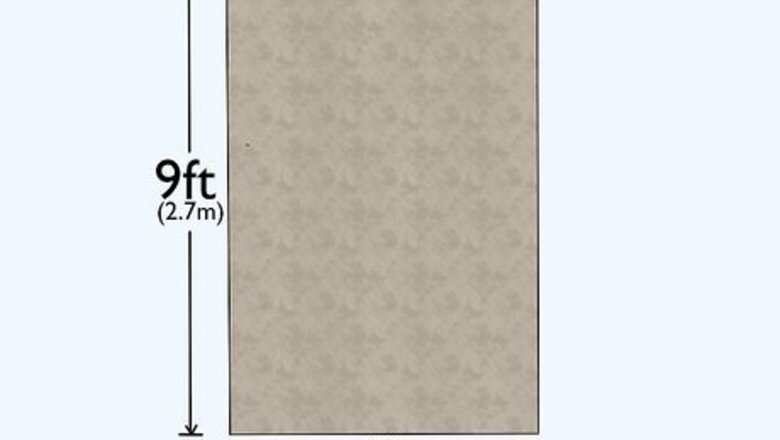
views
Cutting a Large Sheet of Drywall
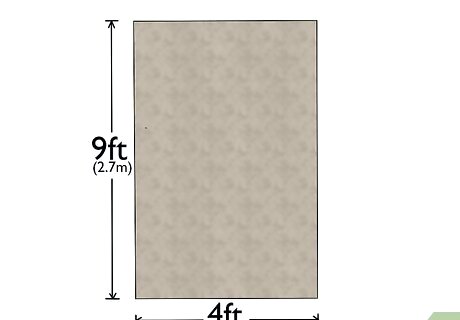
Measure where you need to cut your drywall with a tape measure. You should use whole drywall sheets when possible when you’re remodeling a room. Use this process for making a sheet smaller to fit the last gap in the wall or in case your sheets are too tall for the room. Hold a tape measure over the gap in the wall to see how big of a piece you need and make note of this number. Bring the tape measure over to your drywall and mark where you need to make your cut in pencil. Most whole sheets of drywall are 4 ft (1.2 m) wide. Choose a length of 8 ft (2.4 m), 9 ft (2.7 m), 10 ft (3.0 m), or 12 ft (3.7 m), depending on the height of your room. Measure the last gap at the top, middle, and bottom in case your wall is uneven.
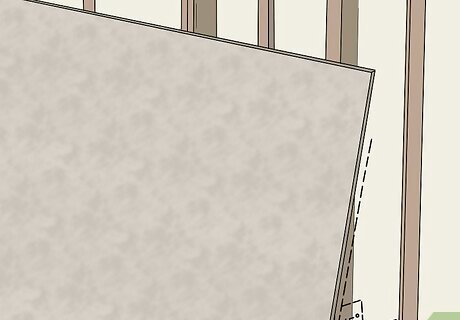
Hold a drywall square or T-square against the drywall where you need to cut it. Lean the sheet of drywall up against a wall at a slight angle of about 45 degrees so you will be cutting it vertically. Obtain a drywall square or T-square, which looks like a large metal ruler with a T at the top, and place it against the drywall. Line up the right edge of your square with the pencil marks on your drywall. If you are left-handed, you may prefer to line up the left edge of the square with your marks.

Run a utility knife along your square to cut the paper and some of the drywall core. Take a utility knife and press the edge into your drywall at the top where you need to start your cut. Pierce the paper and about half of the gypsum core inside the drywall; this is called “scoring” the drywall. Run the knife downward slowly toward the bottom of the sheet of drywall so your blade doesn’t slip. Take the knife out and place it at the bottom of the drywall to make the rest of your cut in an upward direction. If you are not tall enough to reach the top of the drywall sheet, you can lay it down on the floor to make your cuts instead. Use a new, sharp blade since a dull blade could tear the paper on your drywall.
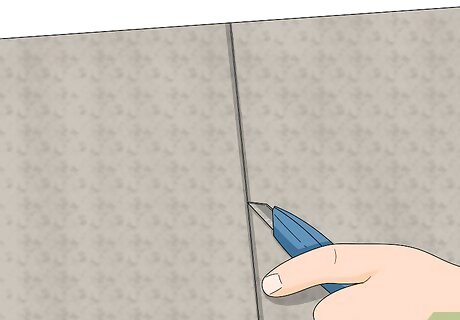
Score both the front and back to cut a thin strip. If you are cutting a thin strip narrower than 3 in (7.6 cm) from the edge of your sheet of drywall, cut both the front and the back of the drywall with your utility knife before attempting to break the strip off. Flip the sheet of drywall over and make the same cut on the back. Trying to break a thin strip of drywall after only scoring the front will cause it to break off in many uneven chunks.
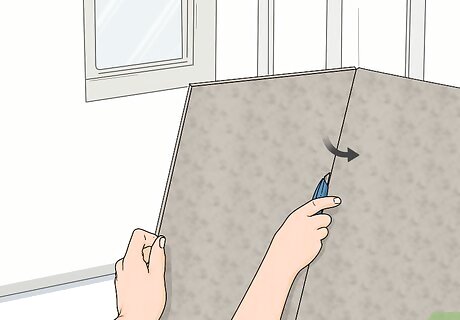
Stand the drywall up and bump it with your knee to break the core completely. Stand behind the drywall and hold it up vertically. Hold each side in your hands as you bump the place where you made the cut on the front with your knee. The drywall core will break the rest of the way when you do this. If the core does not break completely with one bump of your knee, apply more pressure to the unbroken areas with your knee, foot, or fist. If you scored the drywall on the floor, lift the drywall on one side to break the core at your cut.
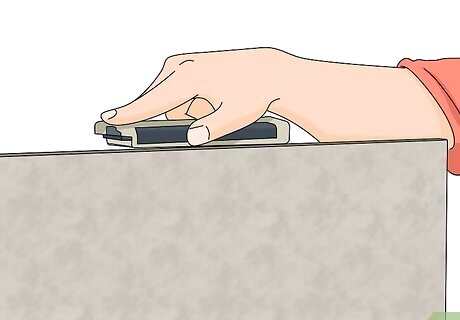
Smooth the edge of your cut with a rasp. Purchase a drywall rasp, or tool designed for grinding down bumps in drywall, at a home improvement store. Locate any spots in your edge that have uneven bumps or protrusions and place the rasp there. Apply pressure to the area as you rub the rasp back and forth over the bump to grind it away. If you have very large bumps because the core broke unevenly, use your utility knife to carve these pieces away before using the rasp to file them down.
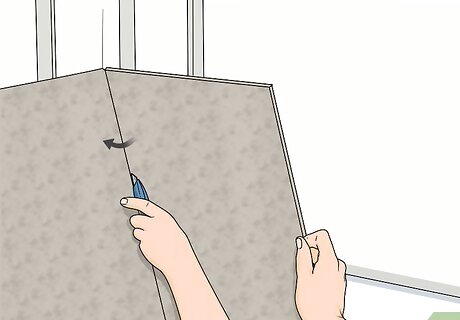
Repeat measuring, scoring, and breaking your drywall to make a cut on another side. If you need to cut the drywall again on a different side, repeat the steps by flipping the sheet around and leaning it against the wall. Measure and mark where you need to make another vertical cut, score it using your square and utility knife, and break the core by applying pressure to the cut. Hang your drywall after you have finished making it the size that you need it to be. If your section of drywall is slightly too large, shave it with a rasp until it fits.
Making a Hole in a Sheet of Drywall
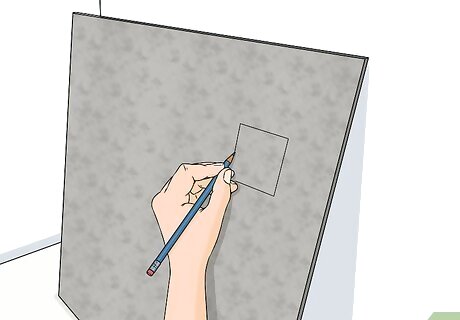
Measure and mark each corner of a square hole. With your tape measure, measure the distance from the top of the bare wall to the top left and right corners of the item you are making a hole for. Then measure from the top corners of the item to its bottom corners. Write these measurements down, then bring your tape measure to the sheet of drywall to make the same measurements, marking each corner in pencil. This process works for any hole you need to cut: holes for windows, doors, outlets, or light fixtures will all use the same measuring process. Use a ruler and pencil to draw the sides of your hole by connecting your corner marks directly on the sheet of drywall. This will give you an accurate line to follow while you’re cutting the hole. To cut a circular hole, measure from the edge of the drywall to the center of the circle that you need to cut. Use a compass tool to mark out your circle in pencil to the correct size of the hole.
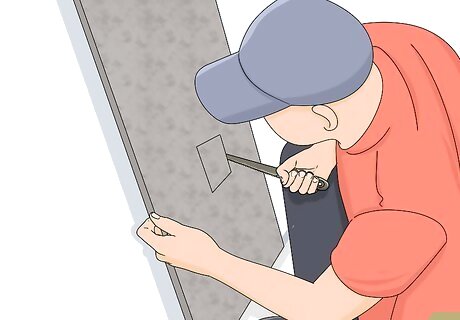
Use a keyhole saw to cut an outlet-sized hole. For a hole for an electrical outlet or light switch, insert a keyhole saw into one of the sides of the hole that you marked in pencil. Move the saw gently back and forth in the drywall, applying slight pressure as you move it along the line to cut one side. Remove the saw when you’ve finished one side and repeat this step for all 4 sides of the hole. Use caution when working around a stud if the drywall is already hung in place over your outlet or light fixture. If you have a difficult time inserting the saw into the drywall for the first part of the cut, make a small slit with a utility knife first and then insert the keyhole saw into that before you start sawing. If you have a larger job, consider using an oscillating tool. Be sure to wear safety goggles and gloves when you’re using a saw.
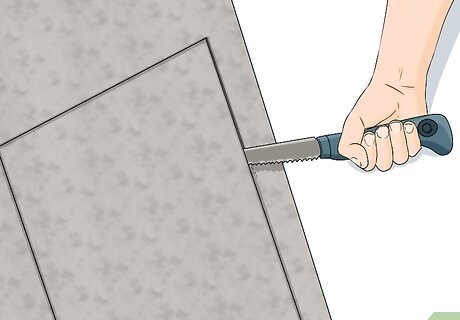
Use a drywall saw for a window or door hole. For larger holes to fit around doors or windows, use a drywall saw to make your cuts. Start sawing at an edge of the drywall if your hole is at the edge and has only 3 sides. Move the saw back and forth, applying gentle pressure to cut through the drywall along your marked lines. If your hole is in the middle of the drywall sheet, pierce the drywall with a utility knife to start your cut, then insert your saw into the slit to begin. Wear safety goggles and gloves to protect your eyes and hands while you’re using a saw.
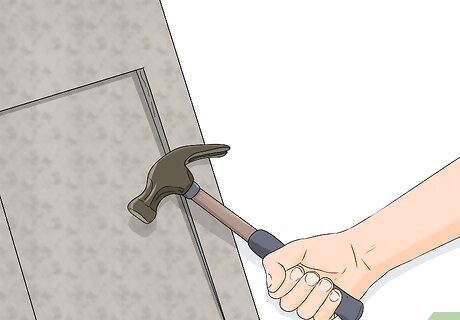
Tap the piece in the middle of the hole lightly with a hammer to remove it. When you have cut all the sides of your hole, use a hammer to push the piece you’re removing out. Give the piece a few light taps with your hammer to make it fall out. A hammer can cause some damage to drywall. Don’t hammer the outer wall that you’re keeping; tap only the middle of the hole since you will be discarding that piece of drywall.
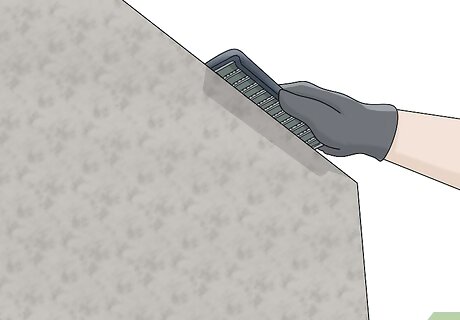
Smooth the edges of the hole with a rasp. Now that your hole is cut, use a drywall rasp to smooth out any bumps that are along your edges. Hold the rasp over the area that needs to be smoothed, and apply light pressure as you rub the rasp back and forth over the area to grind away the extra drywall.

















Comments
0 comment